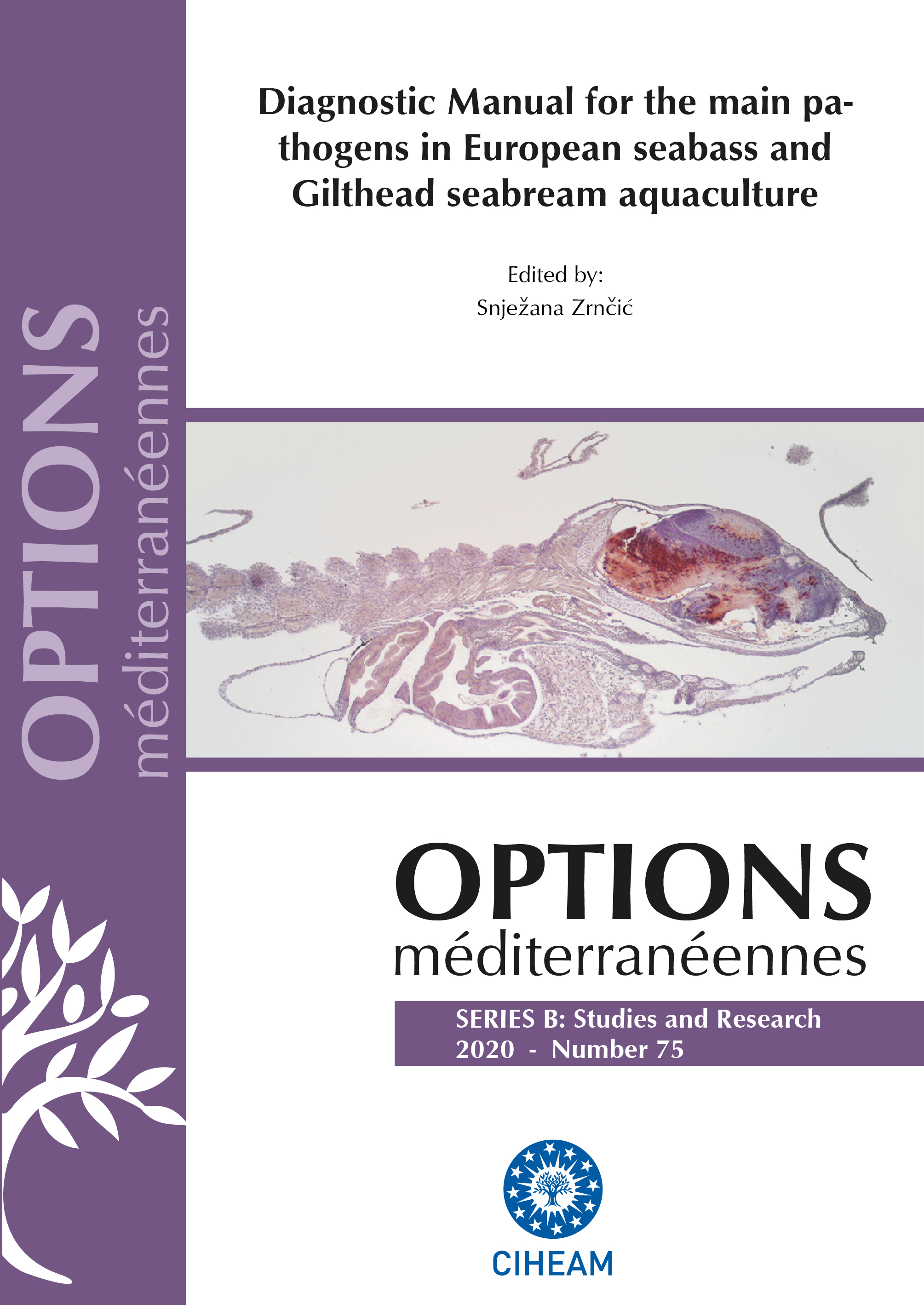| Article précédent | p. 152-153 | Article suivant |
Summary sheet for vibriosis caused by Vibrio harveyi
vibriosis caused by Vibrio harveyi Aetiological agent Vibrio harveyi Epidemiology Hosts: seabass (Dicentrarchus labrax), sole (Solea senegalensis, Dicologlossa cuneata), grouper (Epinephelus spp.), common dentex (Dentex dentex), greater amberjack (Seriola dumerili) and gilthead seabream (Sparus aurata). Seabass is sensitive especially during early grow out (40-150 g) and hatchery rearing phase. Morbidity and mortality rates: Variable, depending on age/size, temperature and co-infections; in seabass mortality in the grow-out phase can reach 10% but may further increase if Betanodavirus, other bacterial infection or parasitic infestation is present. Transmission: Horizontal Factors (environmental, others) for disease outbreak: Outbreaks often occur at seawater temperatures between 18-27oC, although chronic mortalities are reported at lower temperature (winter season). V. harveyi can be frequently isolated in co-occurrence with other infections (Betanodavirus, Photobacterium damselae spp., Vibrio spp., ectoparasites).
- [ Afficher ]
- [ Télécharger ]
- [ Exporter la citation ]
Vous pouvez télécharger la citation au format :
- [ Imprimer ]
-
Mots-clés
AQUACULTURE, EPIDEMIOLOGIE, MALADIE DES POISSONSCiter cet article
Pretto T. Summary sheet for vibriosis caused by Vibrio harveyi . In : Zrncic S. (ed.). Diagnostic Manual for the main pathogens in European seabass and Gilthead seabream aquaculture. Zaragoza : CIHEAM, 2020. p. 152-153. (Options Méditerranéennes : Série B. Etudes et Recherches; n. 75). http://om.ciheam.org/om/pdf/b75/00007952.pdf



